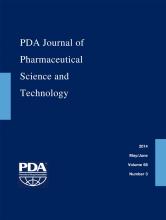Abstract
Degradation products are unwanted chemicals that can develop during the manufacturing, transportation, and storage of drug products and can affect the efficacy of pharmaceutical products. Moreover, even small amounts of degradation products can affect pharmaceutical safety because of the potential to cause adverse effects in patients. Consequently, it is crucial to focus on mechanistic understanding, formulation, storage conditions, and packaging to prevent the formation of degradation products that can negatively affect the quality and safety of the drug product. In this sense, databases and software that help predict the reactions involving the pharmaceutically active substance in the presence of degradation conditions can be used to obtain information on major degradation routes and the main degradation products formed during pharmaceutical product storage. In some cases, when the presence of a genotoxic degradation product is verified, it is necessary to conduct more thorough assessments. It is important to consider the chemical structure to distinguish between compounds with toxicologically alerting structures with associated toxic/genotoxic risks and compounds without active structures that can be treated as ordinary impurities. Evaluating the levels of degradation products based on a risk/benefit analysis is mandatory. Controlling critical variables during early development of drug products and conducting a follow-up study of these impurities can prevent degradation impurities present at concentrations greater than threshold values to ensure product quality. The definition of the impurity profile has become essential per various regulatory requirements. Therefore, this review includes the international regulatory perspective on impurity documents and the toxicological evaluation of degradation products. Additionally, some techniquesused in the investigation of degradation products and stability-indicating assay methods are highlighted.
LAY ABSTRACT: Degradation products are impurities resulting from chemical changes that occur during drug manufacturing. They can also form during storage and transportation in response to changes in light, temperature, pH, and humidity, or due to inherent characteristics of the active pharmaceutical substance, such as their reaction with excipients or on contact with the packaging. The presence of these chemicals can affect product safety and quality. Therefore, it is necessary to know and follow the guidelines and standards regarding degradation products and existing regulatory environments to assess the toxicity and risk related to their presence in pharmaceutical products.
- © PDA, Inc. 2014
PDA members receive access to all articles published in the current year and previous volume year. Institutional subscribers received access to all content. Log in below to receive access to this article if you are either of these.
If you are neither or you are a PDA member trying to access an article outside of your membership license, then you must purchase access to this article (below). If you do not have a username or password for JPST, you will be required to create an account prior to purchasing.
Full issue PDFs are for PDA members only.
Note to pda.org users
The PDA and PDA bookstore websites (www.pda.org and www.pda.org/bookstore) are separate websites from the PDA JPST website. When you first join PDA, your initial UserID and Password are sent to HighWirePress to create your PDA JPST account. Subsequent UserrID and Password changes required at the PDA websites will not pass on to PDA JPST and vice versa. If you forget your PDA JPST UserID and/or Password, you can request help to retrieve UserID and reset Password below.






